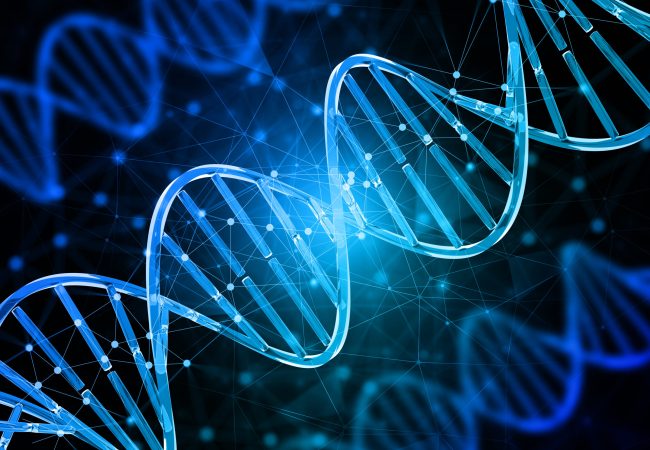SERVICES

DNA Sequencing
We provide Sanger DNA sequencing services in the shortest turnaround time. We accept various types of template, viz. plasmid, unpurified or purified PCR products. Average read length of a single sequence is between 700-800 nr.

Strain identification for both Prokaryotes and Eukaryotes
Strain identification using ribosomal DNA sequencing. As a sample, one can provide purified genomic DNA as well as the bacteria or the tissue sample. Depending on the available online database, we will provide the phylogenetic analysis of the given specimen.

Primer Walking
We offer the whole length sequence of the given plasmid or the PCR product even if that is larger than the read length of the Sanger sequence. The only know how we need is the sequence of atleast 10 nucleotides of the given sample.

Bioburden Testing Services
Bioburden testing, or total viable count testing, is the measure of microbial contamination levels on or in a product and/or environment. Bioburden can be introduced from the raw materials used in the manufacturing process or be introduced via the workforce or manufacturing environment.
Molecular Diagnostic
Our lab specializes in cutting-edge molecular diagnostics, providing accurate and reliable results for advanced medical testing

Biochemistry
Clinical Biochemistry and Immunology involves measuring chemical molecules in blood, urine, and body fluids to diagnose and monitor diseases and treatment progress.
Glucose is the main fuel source for the cells to generate energy and synthesize glycogen, amino acids, and some fats in the body.
The concentration of glucose in the blood, also known as the blood glucose concentration, is regulated by the liver and is maintained quite stable. When there are signs of abnormal blood sugar levels, it can be due to a disorder or a sign of some kind of medical condition.
The blood glucose index is often combined with the HbA1C test to diagnose and monitor the treatment of diabetic and hypotensive patients.
Glucose in fasting condition requires a fasting of 8-10 hrs
For Glucose PP, blood is drawn after 2 hrs of having meal or taking glucose as recommended by the physician.
Blood for HbA1c does not require any preparation.
Blood urea is an important indicator in blood biochemistry assay. Urea is the main degradation product of proteins in the body. Urea will be filtered in the glomeruli to be eliminated from the body through the urine. Therefore, the area index will be the basis for assessing kidney function and kidney diseases. At the same time, it is also the basis for evaluating the level of protein in the diet.
Blood urea often increases in cases of patients with kidney diseases such as glomerulonephritis, kidney failure, kidney stones, tubular inflammation, ureteral stones, dehydration due to high fever, diarrhea, congestive heart failure, …
The decrease in blood urea is usually caused by a low protein diet, nephrotic syndrome, fluid transfusion, pregnant women, and impaired liver function leading to a decrease in urea synthesis.
Blood for urea does not require any preparation.
Serum creatinine is a product of muscle creatinine phosphate degradation and these creatinines are completely filtered out by the kidneys. Serum creatinine usually increases in cases of kidney failure, heart failure, hypertension, gout, hyperthyroidism, Serum creatinine usually decreases in cases of pregnant women, people with muscle atrophy, paralysis, using anti-epileptic drugs. Blood for creatinine does not require any preparation.
glucose in the blood, also known as the blood glucose concentration, is regulated by the liver and is maintained quite stable. When there are signs of abnormal blood sugar levels, it can be due to a disorder or a sign of some kind of medical condition.
ATS, ALT, GGT are indicators used to evaluate and diagnose liver diseases such as acute and chronic hepatitis, damage to the liver parenchyma (viral hepatitis, liver damage caused by drinking alcohol). In addition, these indexes are also used in the screening and diagnosis of cardiomyopathy. The ALP index is also known as the alkaline Phosphatase index. ALP is present mainly in the liver and bones. The ALP index increases in the cases of diseases related to hepatobiliary and bone such as rickets, metabolic disorders in the bones, increased bile ducts, prostate cancer. Albumin is a protein synthesized in the liver, they account for about 60% of the total protein in the serum. Albumin has the function of creating osmotic pressure, transporting metabolites, free fatty acids, hormones, drugs, … In addition, they also play a role in providing amino acids for protein synthesis in tissues. The albumin index plays a role in assessing liver function. Bilirubin is divided into three characteristic indices: total bilirubin, indirect bilirubin, and direct bilirubin. The bilirubin index is often used to diagnose hemolytic jaundice, biliary obstruction, hepatitis.Blood for Liver Funtion Test does not require any preparation.
The blood lipid index includes 4 indexes of total cholesterol, blood lipid HDL-C, LDL-C, Triglyceride.The cholesterol index is used to diagnose and monitor in cases of dyslipidemia, atherosclerosis, hypertension, assessment of liver function, obesity, or indicated for periodic health checks in people above. 40 years old.The blood cholesterol index usually increases in cases of dyslipidemia, atherosclerosis, diabetes mellitus, jaundice, hypothyroidism, biliary obstruction, pregnant women, Blood Lipid Test Index HDL-C (HDL cholesterol)HDL-C index helps to evaluate dyslipidemia. This index plays a role in transporting cholesterol deposited in the walls of blood vessels back to the liver, helping to prevent plaque formation in the walls of blood vessels, so it is also known as good cholesterol.HDL-C levels often decrease in cases of atherosclerosis, obesity, smoking, inactivity, …LDL-C (LDL cholesterol)The LDL-C index is one of the important indicators to evaluate dyslipidemia, atherosclerosis, hypertension, coronary artery disease, LDL-C transports cholesterol to the blood vessels and is the main cause of atherosclerosis, so they are also known as bad cholesterol. The higher the LDL-C concentration, the higher the risk of atherosclerosis. The LDL-C index usually increases in cases of obesity, atherosclerosis, dyslipidemia. LDL-C index usually decreases in cases of exhaustion, cirrhosis, malabsorption. TriglyceridesAs with the above indicators, triglyceride index is often indicated for testing in cases of dyslipidemia, atherosclerosis, hypertension, obesity, and inactivity. Triglycerides usually decrease in cases of exhaustion, hyperthyroidism, malabsorption, after intense physical activity. The triglyceride index increases in cases of obesity, cirrhosis, hypothyroidism, atherosclerosis, dyslipidemia, nephrotic syndrome, diabetes mellitus.Blood for Lipid profile requires 8-10 hrs of fasting condition. Generally, low fat diet is recommended the previous day of giving blood for testing.
This test usually checks the index of Na +, K +, Cl-, Ca2 + ions
Na +
This is the main cation of extracellular fluid, responsible for water retention. When excess Na +, the water will be reabsorbed in the kidneys.
The concentration of Na + in the blood decreases in cases of fluid retention due to renal failure, heart failure, cirrhosis, or sodium loss due to vomiting, hemorrhage, diarrhea, burns, etc. The concentration of Na + in the blood usually increases in cases of hyperemia. aldosterone, drugs containing corticosteroids, dehydration, …
K +
Ion K + is the electrolyte component of the intracellular fluid.
The concentration of K + ions in the blood usually decreases with diarrhea, vomiting. This concentration in the blood increases in case of renal failure, metabolic enzyme inhibitors, potassium-sparing diuretics.
Cl-
Cl- ions are the main constituent of extracellular fluid. The Cl-anion combined with the HCO3- ion plays a role in maintaining the alkaline-acid balance in the body. In addition, the Cl- ion also holds a number of other functions such as maintaining osmotic pressure and water balance in the body, acting as a component of the buffer system, maintaining neutral charge, and supporting the digestive process.
Cl- ion concentration usually increases in cases of salty eating, kidney failure, coma, metabolic acidosis, anaphylaxis, etc. and this concentration usually decreases with prolonged vomiting (pyloric stenosis), diarrhea. , loss of water level causes metabolic alkalosis or binge eating, etc.
Ca ++
Ca ++ plays an important role in heart function, muscle contraction, conduction of nerve impulses, and the body's grip process. Ca ++ concentrations usually decrease with alkaline infection and increase with acidosis. Ca ++ cation concentration often increases when patients with thyrotoxicosis, hyperparathyroidism, excess vitamin D. This concentration usually decreases when vitamin D deficiency, hypoparathyroidism, etc.
Blood tests for electrolytes doesnot require any preparation
Uric acid concentration is the basis for diagnosing and monitoring the treatment of some diseases such as gout, kidney disease, etc. . The concentration of uric acid in the blood usually increases in cases of gout, obesity, heart failure, kidney failure, hypothyroidism, psoriasis, and pre-eclampsia, etc.
The concentration of uric acid in the blood usually decreases in cases of liver cell damage, Wilson disease, Fanconi disease, Hodgkin disease, etc.
glucose in the blood, also known as the blood glucose concentration, is regulated by the liver and is maintained quite stable. When there are signs of abnormal blood sugar levels, it can be due to a disorder or a sign of some kind of medical condition.
IMMUNOLOGY AND SEROLOGY
Common immunologic tests like agglutination, DAT, IAT, ELISA, and flow cytometry detect antigens or antibodies through various antigen-antibody interaction methods
Maternal serum screening
(double marker, triple marker and quadruple marker) for fetal anomaly detection.
Hormones estimation
such as PTH, TSH, free T3, free T4, FSH, LH, Prolactin, Testosterone, Anti mullerine hormone etc
Determining Serology status
of a person by testing for HIV, Hepatitis B virus, Hepatitis C virus, Syphillis(VDRL) etc.
Assessment of allergy
Using the world class technology based on the principle of ELISA
Monitoring response to cancer
treatment by testing the Cancer markers like CA125, PSA, CA19.9 etc
Assessing vitamin profile
And bone density by testing common vitamins like Vitamin D3, vitamin B12 etc
Evaluation of immune factors
with auto immunity through IIFA, Immunoblot, CLIA in detecting auto immune diseases like Rheumatoid arthritis, ANA etc
Determining antigens and antibodies
raised in person when affected by vector bone diseases like Dengue, Malaria and Chikungunia and other bacterial diseases like Typhoid , Scrub typhus etc.
CLINICAL PATHOLOGY AND CYTOLOGY
It focuses on the nature of diseases and organ changes they cause, with our diagnostic centers offering a full range of pathology tests.

Customised Plans





